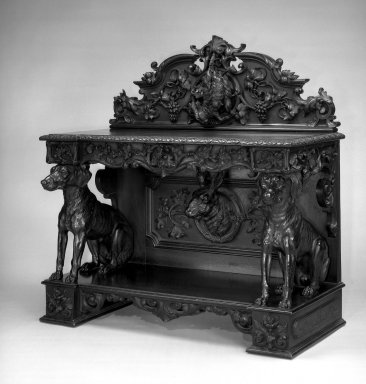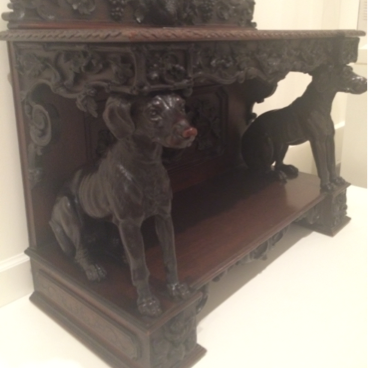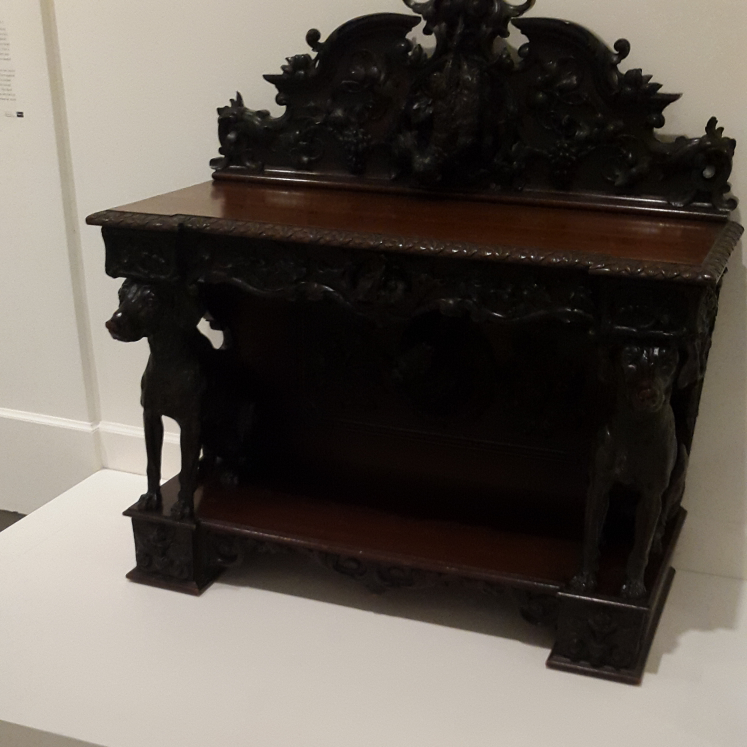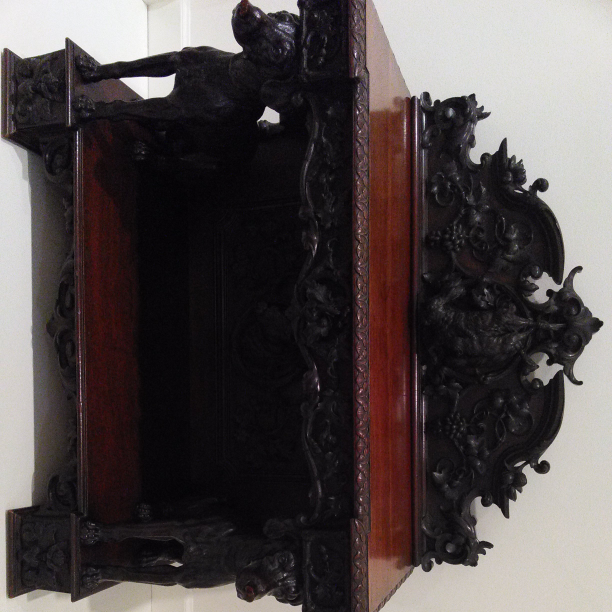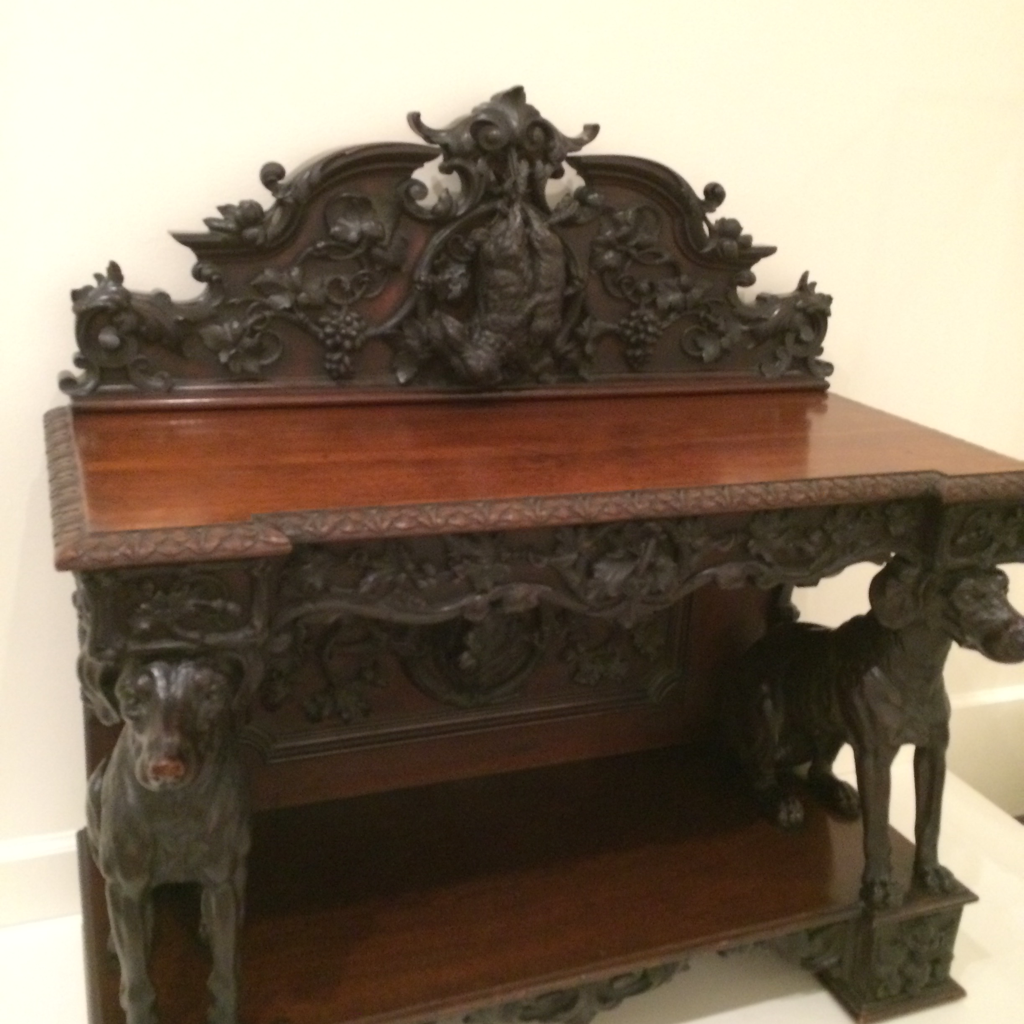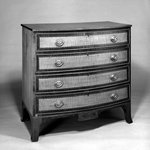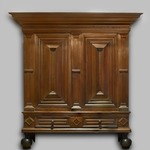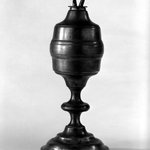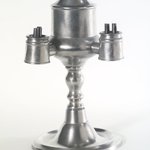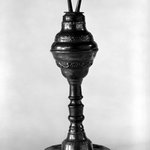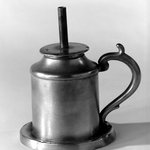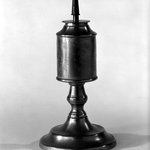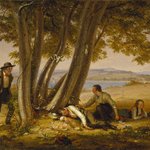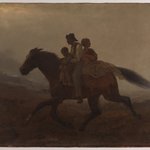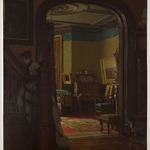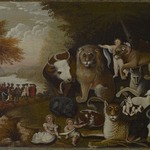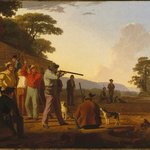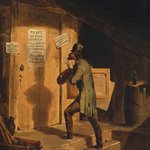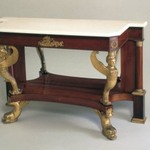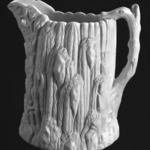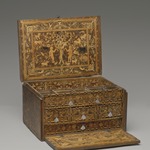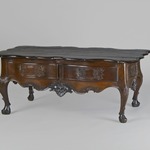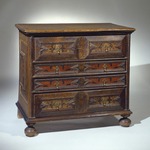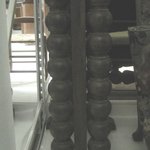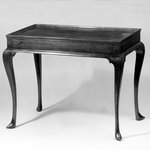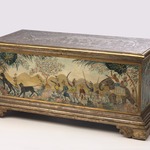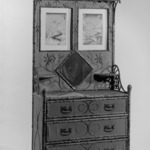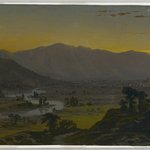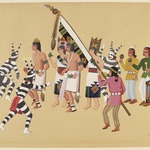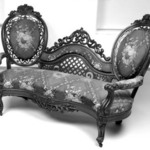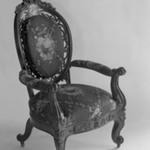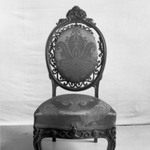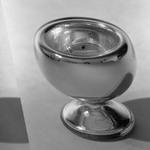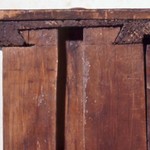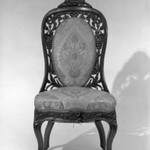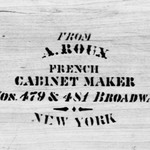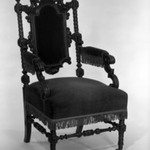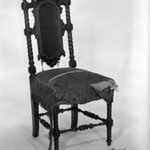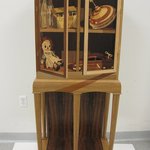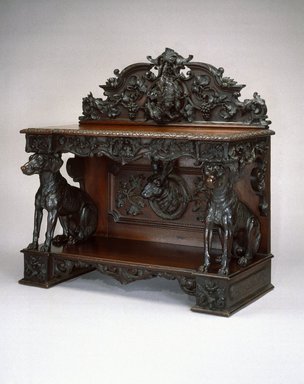
Sideboard
Decorative Arts and Design
The dining room and accompanying furniture first appeared in aristocratic houses at the end of the eighteenth century. Dining rooms were furnished with a set consisting of table, chairs, and sideboards. The sideboard was often decorated with imagery related to its function.
This sideboard incorporates two hound dogs as front supports, a hare against the lower backboard, and a cricket nestled in the center of the carved vine on the front apron. The dead game animals illusionistically tied up at the crest sound a somewhat more sinister note.
This sideboard incorporates two hound dogs as front supports, a hare against the lower backboard, and a cricket nestled in the center of the carved vine on the front apron. The dead game animals illusionistically tied up at the crest sound a somewhat more sinister note.
MEDIUM
Black walnut
DATES
ca. 1855
DIMENSIONS
49 x 49 x 24 in. (124.5 x 124.5 x 61.0 cm) (show scale)



MARKINGS
Unmarked
COLLECTIONS
Decorative Arts and Design
ACCESSION NUMBER
1995.15
CREDIT LINE
Gift of Benno Bordiga, by exchange
CATALOGUE DESCRIPTION
Sideboard. American black walnut (Juglans nigra). Rectangular form, lower shelf raised on bracketed feet with scalloped, scrolled apron. Incised horizontal panels on sides. Paired, fully carved, seated male hunting dogs at either end support upper serving top with scrolling apron framed and decorated with carved branches with central knot of twigs and leaves with large insect at center; side aprons with similar carving supported by scrolled volutes against backboard. Backboard with fully carved bust of hare facing proper right framed with and flanked by vines and leaves. Quarter round leaf molding to top. Symmetrical, segmental pedimented splash board with elaborate carved vines and grapes with centered hanging dead hare, to proper right, and squirrel, to proper left.
Condition: Very good. Flat surfaces faded and scratches, remainder of carved surfaces seemingly in original condition.
EXHIBITIONS
MUSEUM LOCATION
This item is not on view
CAPTION
Alexander Roux (American, born France, 1813–1886 (active New York, 1836–1880)). Sideboard, ca. 1855. Black walnut, 49 x 49 x 24 in. (124.5 x 124.5 x 61.0 cm). Brooklyn Museum, Gift of Benno Bordiga, by exchange, 1995.15. Creative Commons-BY (Photo: Brooklyn Museum, 1995.15_SL1.jpg)
IMAGE
overall, 1995.15_SL1.jpg. Brooklyn Museum photograph
"CUR" at the beginning of an image file name means that the image was created by a curatorial staff member. These study images may be digital point-and-shoot photographs, when we don\'t yet have high-quality studio photography, or they may be scans of older negatives, slides, or photographic prints, providing historical documentation of the object.
RIGHTS STATEMENT
Creative Commons-BY
You may download and use Brooklyn Museum images of this three-dimensional work in accordance with a Creative Commons license. Fair use, as understood under the United States Copyright Act, may also apply.
Please include caption information from this page and credit the Brooklyn Museum. If you need a high resolution file, please fill out our online application form (charges apply).
For further information about copyright, we recommend resources at the United States Library of Congress, Cornell University, Copyright and Cultural Institutions: Guidelines for U.S. Libraries, Archives, and Museums, and Copyright Watch.
For more information about the Museum's rights project, including how rights types are assigned, please see our blog posts on copyright.
If you have any information regarding this work and rights to it, please contact copyright@brooklynmuseum.org.
RECORD COMPLETENESS
Not every record you will find here is complete. More information is available for some works than for others, and some entries have been updated more recently. Records are frequently reviewed and revised, and we welcome any additional information you might have.
